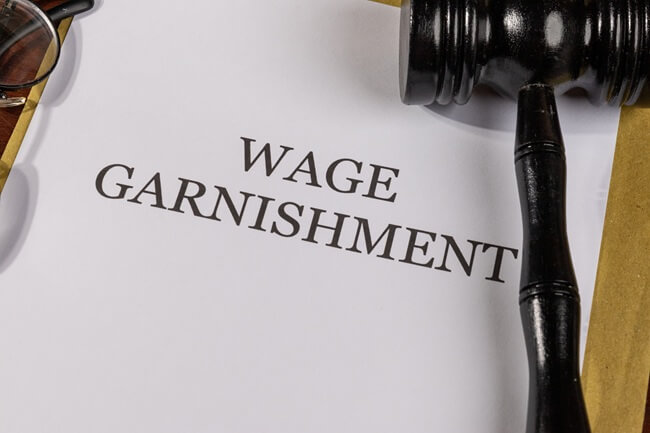The LT16 is a collection notice that indicates that the IRS has already tried to resolve your tax matter several times. Since you haven’t responded to their previous messages, they’re preparing to escalate their collection efforts. Even though this tax collection notice requires immediate attention, you still have options.
Learn more about what the LT16 notice means and what you can do right now to handle your tax debt.
Key Takeaways
- LT16 indicates that the IRS is ready to start enforced collection actions, like liens and levies.
- Ignoring LT16 can have serious financial consequences, such as wage garnishment.
- You have payment and relief options, but you must act to benefit from them.
- Working with a tax professional can lead to more relief options and better outcomes.
What to Look for in Your LT16 Notice
LT16 states in bold letters, “Your account has been assigned for enforcement action. Please call us about your unpaid taxes.” By reading this notice in full, you can figure out exactly what the IRS believes you owe, what your options are, and what will happen if you do not respond.
The first page of the letter indicates that you have 10 days to either pay the amount you owe in full or contact the IRS to set up other arrangements. This short turnaround time indicates that the IRS is ready to move forward with enforced collection actions fairly quickly if you don’t take action.
The next section of the notice outlines the amount you owe, broken down by year, initial amount owed, penalties, and interest. It also explains the penalties applied to your account and how you may request to have those penalties removed.
Finally, the form includes contact information for the IRS and a link to an IRS page on LT16.
When the IRS Sends the LT16
The IRS sends this after sending multiple collection notices, such as CP14, CP501, and CP503. Each of these notices generally gives you 21 days to respond, and the IRS does not send the next notice until the prior one goes unanswered, so this notice typically comes several months into the collection process.
What Comes Next
If you do not pay your tax debt in full, set up other payment arrangements, or contact the IRS to discuss your other options, the IRS may move forward and send CP504, followed by Letter 1058 or LT11. This is your Final Notice of Intent to Levy and Notice of Your Right to a Hearing. Both Letter 1058 and LT11 satisfy the IRS’s legal obligation to notify you of their plan to levy your assets before moving forward with a levy of your bank account, wages, or other assets.
What Happens If You Ignore LT16
Ignoring any IRS communication can put you at risk of serious financial consequences, but it’s essential not to ignore LT16. Because this letter is so far along in the collection process, you are running out of time to explore your options and work with the IRS on a resolution.
Penalties and Interest
By the time you receive LT16, penalties and interest have likely been accumulating on your tax debt for months. This can end up costing you hundreds or thousands of extra dollars on top of your tax debt, since interest compounds daily.
Aggressive Collection Actions
After sending its standard notices and then its final notice by certified mail, the IRS stops attempting to secure voluntary payment of your tax debt. They will then resort to liens and levies:
- Place a lien on your assets, which makes it hard to sell or refinance the secured debt attached to any of your assets
- Freeze the funds in your bank account to cover your tax debt
- Levy other financial assets, such as investment accounts or retirement accounts.
- Garnish your wages except the exempt amount, which leaves you with far less than other creditors are required to leave when garnishing you.
- Seize your other assets and sell them to pay back the IRS
How to Resolve Unpaid Taxes
The IRS does offer a range of payment options. You just have to be willing to look into payment plans and relief options, work with the IRS, and discuss your options with a tax professional. In general, the IRS always prefers to secure tax debt voluntarily rather than seizing it via enforced collection actions.
Voluntary payment costs less on their end and saves them the expense of going to court. Working with the IRS and paying your tax debt voluntarily can also decrease the amount you spend on interest and penalties.
Payment Options
Some of the relief options that may be available to you include:
- Installment agreements, including a simple installment agreement that allows you to pay your debt off in equal monthly installments until the Collection Statute Expiration Date
- Offer in compromise, which involves settling your tax debt for less than you owe based on your ability to pay
- Currently not collectible status, which temporarily stops the IRS’s collection actions until your financial situation improves
- Penalty abatement, which isn’t technically a payment option but may reduce the amount you owe by taking off some or all of your penalties
The Importance of Communication
The best way to avoid enforced collection actions and protect your finances is to communicate with the IRS, either directly or via your tax attorney. If you ignore their notices and don’t take steps to resolve your tax debt, they have no way of knowing whether or not you intend to pay your taxes.
How a Tax Professional Can Help
Facing the IRS alone can be overwhelming. A qualified tax professional can make a big difference in your repayment efforts and help you find solutions you didn’t know existed. At Wiggam Law, we can help by reviewing your IRS account transcripts, taking over communication with the IRS on your behalf, protecting you from aggressive collection actions, and negotiating payment or settlement options.
At Wiggam Law, we can help – we know the tax system, what you’re up against, and how to navigate it for your benefit.
If you’ve received LT16, it’s time to take action. The IRS may not have taken aggressive action to collect what they are owed, but they are very close to taking that step. With the team at Wiggam Law, you can explore your options while protecting your finances. Call us at (404) 233-9800 or reach out online to discuss your tax situation with an experienced tax professional now.
LT16 Frequently Asked Questions
Is LT16 the same as the Final Notice of Intent to Levy and Notice of Your Right to a Hearing?
No. LT16 means you are close to receiving the final levy notice, but you’re not yet at that point in the collection process. It’s important to take action now to avoid letting it get that far.
What if I can’t afford to pay the amount listed?
The IRS has other payment options available, such as installment agreements, currently not collectible status, and offers in compromise. However, your best bet is to talk to a tax professional to see which options you qualify for and best fit your current situation.
What happens if I ignore LT16?
The IRS will move on to the next step in the collection process, which may be several additional collection notices. The collection process ends with LT11 or Letter 1058, which gives them the right to seize your wages, bank accounts, and other assets.
Is the IRS going to garnish my wages?
They aren’t going to garnish your wages yet, but that step may be coming. It’s important to reach out to a tax professional or the IRS directly before the 10-day deadline on the LT-16 passes.
Sources:
https://www.irs.gov/individuals/understanding-your-lt16-notice
https://www.taxpayeradvocate.irs.gov/notices/lt-16/
https://www.taxpayeradvocate.irs.gov/notices/letter-16/
https://www.taxpayeradvocate.irs.gov/get-help/roadmap/?notice=29173
https://www.irs.gov/pub/notices/lt16_english.pdf
https://www.taxpayeradvocate.irs.gov/notices/notice-of-intent-to-levy/



